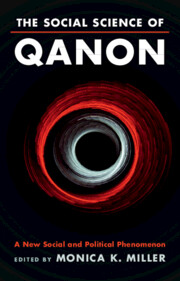Book contents
- The Social Science of QAnon
- The Social Science of QAnon
- Copyright page
- Dedication
- Contents
- Contributors
- Preface
- Part I Introduction to QAnon
- Part II Recruiting and Maintaining Followers
- Chapter 2 Down the Conspiracy Theory Rabbit Hole
- Chapter 3 Psychological Motives of QAnon Followers
- Chapter 4 Cognitive Processes, Biases, and Traits That Fuel QAnon
- Chapter 5 The Role of Moral Cognitions in the Growth of QAnon
- Chapter 6 Emotions and the QAnon Conspiracy Theory
- Chapter 7 Recruitment to QAnon
- Part III QAnon and Society
- Part IV The Role of Communication in Promoting and Limiting QAnon Support
- Part V The Future of QAnon
- Index
- References
Chapter 7 - Recruitment to QAnon
Ordinary Persuasion and Human Agency or “Brainwashing”?
from Part II - Recruiting and Maintaining Followers
Published online by Cambridge University Press: 14 September 2023
- The Social Science of QAnon
- The Social Science of QAnon
- Copyright page
- Dedication
- Contents
- Contributors
- Preface
- Part I Introduction to QAnon
- Part II Recruiting and Maintaining Followers
- Chapter 2 Down the Conspiracy Theory Rabbit Hole
- Chapter 3 Psychological Motives of QAnon Followers
- Chapter 4 Cognitive Processes, Biases, and Traits That Fuel QAnon
- Chapter 5 The Role of Moral Cognitions in the Growth of QAnon
- Chapter 6 Emotions and the QAnon Conspiracy Theory
- Chapter 7 Recruitment to QAnon
- Part III QAnon and Society
- Part IV The Role of Communication in Promoting and Limiting QAnon Support
- Part V The Future of QAnon
- Index
- References
Summary
This chapter examines research about recruitment to political and new religious movements from the 1960s, 70s, and 80s, contrasting those results with the meager research base on participants in QAnon, noting similarities and differences. The major finding from the earlier research was that young people participated of their own volition as an expression of their human agency. They were not “brainwashed”. This key finding is generally applicable to QAnon participants, although QAnon devotees are typically older and often were recruited through social media and the internet. Social psychological theories such as “foot-in-the-door” and what happens when prophecies fail are applied to QAnon recruitment as well. The chapter ends with suggestions for research needed to fully understand QAnon recruitment.
Keywords
- Type
- Chapter
- Information
- The Social Science of QAnonA New Social and Political Phenomenon, pp. 104 - 120Publisher: Cambridge University PressPrint publication year: 2023
References
- 2
- Cited by

